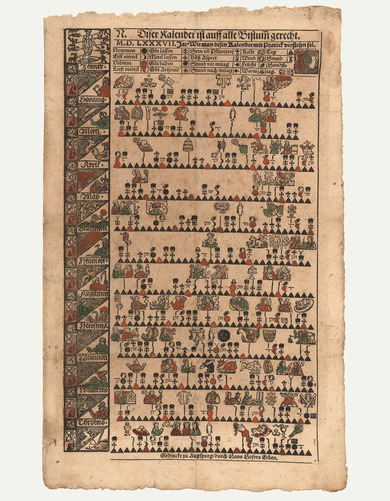An Augsburg symbol calendar
An Augsburg symbol calendar
Pictures, drawings and symbols can explain or even replace written texts for poor readers or the illiterate. Long before children learn to read for comprehension, they can read situations, pictures and pictograms. In this Christian calendar from the year 1587, symbols elucidate the course of the year for the illiterate. Pictures symbolise church feast and saints' days; bloodletting signs, lunar phases, astrological signs and weather symbols acted as guides for health and how to live. These often illuminated calendars were highly popular as wall adornments. They functioned as an everyday system of order and thus became a fixed element of folk culture. The lore of the still popular farmer's almanacs and the experience-based weather predictions of the so-called Hundertjährige Kalender (hundred-years calendar) are the heirs to this tradition.
From the last third of the 15th century onward, the symbol calendars faced competition from the calendar booklets in quarto format; which, however, as they contained texts, were primarily aimed at educated users. Calendars were sold by colporteurs until well into the 19th century.

